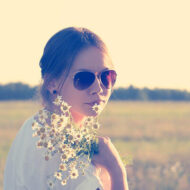Abstract Art
Is It Art At All?
Yes, I am an artist. And yes, I even have a formal education in fine art, but that doesn’t necessarily mean that I get abstract art in the least. I know that I may very well come up against some criticism here, but if I’ve learned anything over the years, it’s that art is very subjective.
But first, what is abstract art? According to this definition in about.com, “abstract art can be a painting or a sculpture (including assemblage) that does not depict a person, place, or thing in the natural world – even in an extremely distorted or exaggerated way. Therefore, the subject of the work is based on what you see: color, shapes, brushstrokes, size, scale, and in some cases, the process” (such as Jackson Pollock’s work using dripping or splattering).
This would then differentiate from works of the cubist movement. Cubism does begin to abstract, deviating from pictorial elements which would lend towards realism. Cubism reduces natural forms into geometric shapes. It often depicts the subject matter by displaying several aspects or viewpoints of the same object or person simultaneously and by fragmenting the form. The best example of this is one of Picasso’s paintings which shows a woman in profile and full frontal view at the same time.
But by the definition of abstract art, cubism is not abstract art in that it still depicts something found in the real world. Abstract art seems to be, as the definition explains, an exploration of color and shapes, brushstrokes and application, size and scale. Those elements are supposed to evoke an emotional response from the viewer. I suppose that it can. It’s long been known that color can evoke emotion or affect mood. Cool colors such as blues and greens can subdue or calm. Reds can heighten emotion, energize, or lean towards aggression. Simply put, because colors utilize different wavelengths, they affect our minds differently.
However, what I have a hard time swallowing is the audience who seems enraptured by these works. They stand there trying to interpret what mood the artist was in while creating it. Almost like the old-school psychiatrist who tries to decipher what a patient’s mental state is via their interpretations of the random ink blots in the Rorschach Test. They try to sound sophisticated and cultured by analyzing these works with a thoughtful and almost pensive look on their faces. They try to attribute color choices, brush strokes, and the size of shapes to some deep-seated angst on the artist’s part.
Perhaps I’m missing the point entirely. Perhaps the artist really is feeling those things when they’re applying paint to canvas. All I know is that Jackson Pollock accidentally dribbled paint onto a canvas during a time of frustration and trying to re-invent himself. He went with it. He dripped, dribbled, and splattered paint. People called him a genius, reading into each piece a whole slew of emotions.
One might get lost in Kandinsky’s more whimsical paintings, letting the eye travel through it like a fairy tale landscape. They might even try to decipher what the artist must have been going through before, during, and after the World War.
Or Mondrian’s geometric canvases in which he simplifies his subjects down to basic geometric shapes, primary colors, and horizontal and vertical directions. And by the way, to him these things represented two opposing forces, such as yin yang, masculine and feminine, dynamic and static.
Personally, I just don’t get it. Don’t get me wrong. I do appreciate it as a form of art, if only in that it qualifies by the simple definition of the word “art,” which according to Mirriam-Webster is:
- something that is created with imagination and skill and that is beautiful or that expresses important ideas or feelings
- works created by artists : paintings, sculptures, etc., that are created to be beautiful or to express important ideas or feelings
- the methods and skills used for painting, sculpting, drawing, etc.
The artist in each case did create something. In some cases, I can appreciate them, if not for their beauty, then in the colors chosen and rhythm of strokes, drips, etc. I certainly don’t get any important ideas or emotions from them. And there was a particular method used unique to each abstract artist. So in the strictest sense of the definition, then yes, I suppose abstract art IS art after all. I just don’t happen to have the appreciation for it in the same sense that I don’t have an appreciation for all genres of music. And oddly, when I hear people very ignorantly say, “I can do that,” I have to bite my tongue from telling them to go ahead and try. Many of these abstract artists received formal art education before deviating into the abstract. Even cubist painter, Picasso created works that were more traditional that no one would claim being able to create as if it were a simple child’s coloring book.
So, I guess I’ll stick with what I said in the beginning. Art is subjective. And as the age-old phrase goes, “beauty is in the eye of the beholder.”
Further Reading:
Art History: Modern Art
This blog contains Amazon Affiliate links. As an Amazon Associate, I may earn from qualifying purchases.







Recent Comments